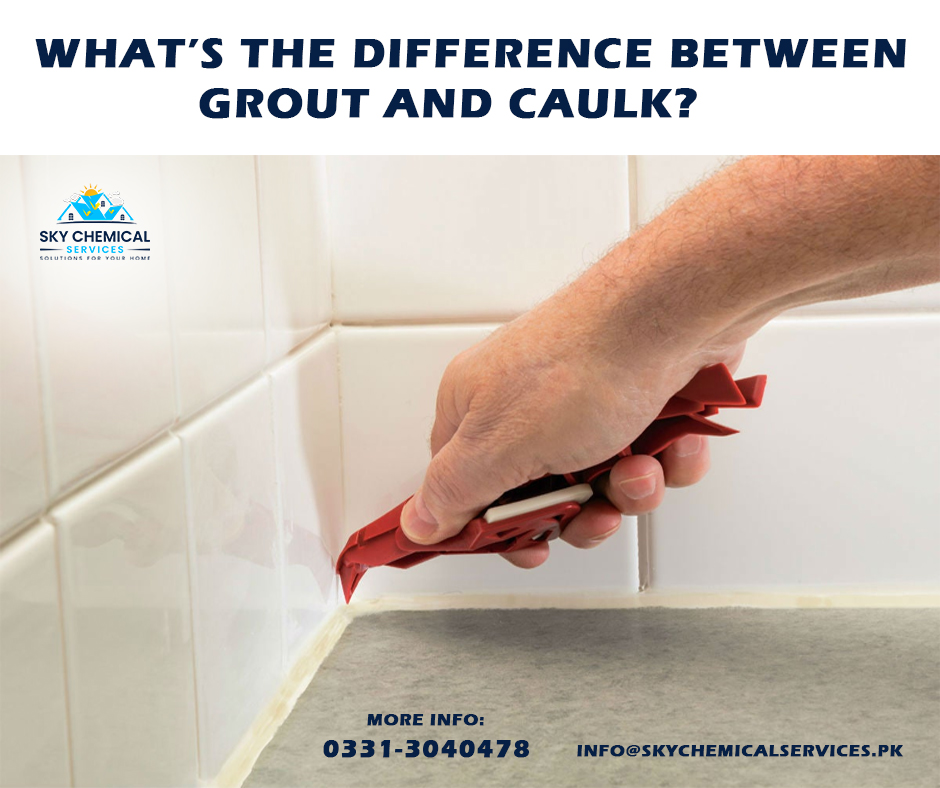
Construction or home improvement projects are not complete without grout or caulk. Why? Because they are used to seal joints or gaps between tiles or other surfaces. Waterproofing experts are well-aware of its importance. While both serve a similar purpose, they have several differences, in terms of composition, application, and functionality. Understanding these differences is crucial for achieving the desired results.
What is Grout?
Grout is a paste-like substance formed by mixing cement, water, and sand. It is used to fill the gaps between tiles, such as on floors, walls, or countertops. Grout comes in various forms, including sanded and unsanded (depends on the size of the grout lines). Sanded grout is used for wider gaps, while unsanded grout is suitable for narrower joints.
Read More
List of Popular Water Leakage Solutions in Karachi
How to Distinguish the Best Roof Leakage Chemicals in Karachi from Bad Ones?
How to Apply Chemicals for Water Leakage Solutions in Pakistan?
Features of Grout & Caulk
Grout hardens over time, providing a rigid and stable surface between tiles. In addition, it is resistant to moisture and temperature. Grout is an excellent choice for areas prone to water exposure, like bathrooms and kitchens. Additionally, it comes in a wide range of colors, allowing for better aesthetics and more attraction.
On the other hand, caulk is a flexible, waterproof sealant made from silicone, latex, or acrylic materials. It is used to seal joints and gaps, such as corners, edges, and transitions between different surfaces. Unlike grout, caulk is not load-bearing. In other words, it does not provide structural support. Lastly, it is resistant to UV and mildew.
Caulk can accommodate slight movements and shifts without cracking or breaking. This characteristic makes it ideal for sealing gaps in areas prone to expansion and contraction, such as around windows, doors, and baseboards. Caulk can prevent water infiltration, making it suitable for wet areas or exterior applications.
Read More
Does Roof Leakage Chemicals in Pakistan Comes Under the Construction Industry?
How to Find the Best Roof Seepage Solution in Karachi?
Factors on Why Polyurethane Foam is Essential for Homes
Another significant difference between grout and caulk is the application process. Grout is mixed with a specific consistency and applied with a rubber float or grout bag. Afterwards, excess grout is wiped off the tile surface, and the joints are left to dry and cure. In contrast, caulk is applied directly from a tube using a caulking gun. The caulk is dispensed into the joint, and a smooth, consistent bead is formed using a smoothing tool.
While grout and caulk serve different purposes, there are instances where they can be used together. In tiled areas, grout is used to fill the gaps between tiles, providing a solid surface, while caulk is applied along the edges where the tile combines with another surface, ensuring a flexible and watertight seal.
| Parameters | Caulk | Grout |
| Application | Used as a sealant. Performs well at angled seams. | Fills the joints between tiles. A better choice for wet areas. |
| Material | Polymers of rubber and latex | Mixture of water, cement, and sand |
| Waterproof | Yes (Depends on Quality) | Yes |
| Availability | Marketed as a gun | Porous paste available for mixing |
| Strength | Less strong. Should be utilized frequently | Tough and durable for extended periods |
Conclusion
Grout and caulk are important materials in the construction industry. Grout is a durable, rigid substance used to fill gaps between tiles, while caulk is a flexible sealant that prevents water infiltration in joints and transitions. Understanding the differences between grout and caulk is crucial for selecting the appropriate material for your specific needs and achieving successful results in your projects.
Book an appointment with Sky Chemical Services for a water-tight seal in your home or office.
